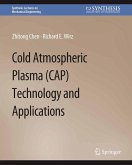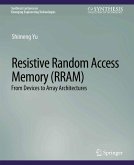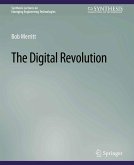Oleg O. Baranov received his Ph.D. and D.Sc. degrees in aircraft technology and materials science from National Aerospace University, Kharkiv, Ukraine, in 2000 and 2016, respectively. Since 2000, he has been a Faculty Member with the National Aerospace University focusing on the development and optimization of aircraft engines. His current research interests include plasma physics and nanotechnology, including PVD coating, magnetron and vacuum-arc deposition, plasma control and diagnostics in deposition setups, mechanical properties of materials and thin films, and surface plasma processing.
Igor Levchenko was Senior Research Fellow at the Commonwealth Scientific Industrial Research Organization, Sydney, NSW, Australia. He is currently a Research Scientist with the Plasma Sources and Applications Centre/Space Propulsion Centre, Nanyang Technological University, Singapore, and an Adjunct Professor with the School of Chemistry, Physics, and Mechanical Engineering, Queensland University of Technology, Brisbane, QLD, Australia. He has authored or co-authored more than 200 journal articles, as well as several books and book chapters. His current research interests include the development of plasma-enabled strategies for synthesis and functionalization of hierarchical multicomponent metamaterials, their application in energy harvesting and storage, electronics and medicine, and electric propulsion systems for space applications.
Shuyan Xu is a Professor of plasma physics with a combination of experimental, analytical, and computational knowledge and experience. He conceived and founded the Plasma Sources and Applications Centre, Nanyang Technological University, Singapore, that currently comprises several research units, namely Plasma Processing Laboratory, Advanced Materials and Nanostructures Laboratory, Photovoltaic Research Laboratory, and Space Propulsion Centre. He has authored or co-authored approximately 230 journal publications, 2 books, and several book chapters, delivered close to 70 keynote addresses and invited talks, and holds 10 international patents. His current research interests include physics and applications of high-density plasmas, rotating magnetic field current drive in fusion plasma, space electric propulsion, development of plasma facilities and diagnostics, and application of nonequilibrium plasma for silicon photovoltaics, as well as plasma-aided nanofabrication and processing.
Kateryna Bazaka is an Associate Professor with the College of Engineering and Computer Science and Associate Director (Education), Research School of Electrical Energy and Materials Engineering, Australian National University. Her current research interests include the development and application of low-temperature plasmas for the synthesis and processing of functional nanostructured materials for electronics, energy, and biomedical applications, sustainable and space technologies, and direct and solution-mediated treatment of microorganisms and cancer cells.









